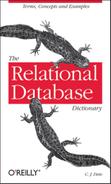The book you’re holding is about words. Words enable us to communicate, but only when we share an understanding of what those words mean. In everyday life, the precise meaning of our words is often a bit fuzzy. You can tell me that you’ve “cut” yourself, and our shared understanding of what it means to be “cut” is good enough for most practical purposes. Show the doctor your cut, though, and she’ll probably trot out the word “laceration” and charge you $60 for her trouble.
Indeed, in the field of medicine, the precise use of terminology is critical to proper care. Complain to your doctor of “dizziness,” and you’ll soon find her talking in terms of vertigo, disequilibrium, and pre-syncope. Why? Because “dizzy” is an ambiguous term. People apply the term “dizzy” to at least three distinct feelings, with different underlying causes that lead to differing treatments. The first step to diagnosing “dizziness” is to determine accurately and precisely what you are experiencing. Then, when talking about your treatment, your doctor will use very precise words that are carefully defined to eliminate ambiguity in communication between medical professionals.
Discussions about relational theory do not usually put your health at risk. However, they do lead to some very heated arguments. Terminology in our field is frequently co-opted by vendor marketing campaigns. Practitioners often adhere to fuzzy, imprecise, and sometimes just plain wrong definitions of terms. I’ve seen people argue in “violent agreement”—in full accord, but not realizing it—because they lacked a fully shared and precise definition of the words they were throwing at each other.
Our field is maturing. We are developing our own shared language. As in medicine, our language will enable us to communicate clearly and precisely about what we do. And again as in medicine, clarity and precision are critical to the success of our work, and ultimately to the success of our clients. Languages grow and change over time. C. J. Date’s effort here is just the beginning. But it’s a good beginning. To all who read this foreword and the book that follows, I wish you clarity—of thought, and in words.
—Jonathan Gennick
Munising, Michigan
June 2006
